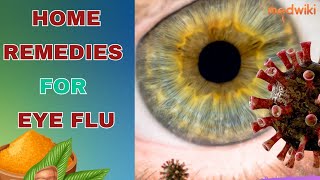Treat And Prevent Eye Flu Effectively
How to treat And prevent eye flu effectively?Dealing with conjunctivitis can be a difficult and uncomfortable experience. However, there are treatments for conjunctivitis dependig upon its cause. For viral conjunctivitis, applying cool compresses three to four times a day and using artificial tears can help relieve symptoms.Antihistamine eye drops like olopatadine and ketotifen, and those containing mast cell stabilizers such as cromolyn and , can prevent and treat allergic conjunctivitis effectively. Steroid eye drops such as dexamethasone, prednisolone, or fluorometholone can be used sparingly for severe allergic reactions.For bacterial conjunctivitis, antibiotic eye drops or ointments are usually prescribed. Non-prescription products containing polymyxin B, bacitracin, and gramicidin may also be used, but talk to a pharmacist first. If the condition worsens or does not improve within 2 days, consult a doctor. Prescription antibiotic eye drops or ointments such as erythromycin, ciprofloxacin, gatifloxacin, fusidic acid, moxifloxacin, and ofloxacin are available.To care for someone with infectious conjunctivitis, avoid touching their face, hands, or anything they've touched. Wash your hands frequently and don't share personal items such as towels, pillowcases, face cloths, or soap. Discard used eye makeup.Teach children to blow their nose carefully, cover their nose and mouth when coughing or sneezing, and avoid wiping their nose with their hand, wear goggles when swimming, and keep windows closed during warmer months to stay away from allergens.To ensure appropriate treatment, it's best to consult a pharmacist or doctor for recommendations.Source:- https://medbroadcast.com/condition/getcondition/conjunctivitisDisclaimer:- This information is intended to supplement, not substitute, advice from your healthcare provider or doctor. It does not cover all possible uses, precautions, interactions, or side effects, and may not be appropriate for your specific healthcare needs. Always consult with your doctor or another qualified healthcare provider before modifying or discontinuing any prescribed portion of your healthcare plan or treatment, in order to determine the best course of therapy for you. Do not ignore or delay professional medical advice based on anything you have seen or read on Medwiki.Find us at:https://www.instagram.com/medwiki_/?h…https://twitter.com/medwiki_inchttps://www.facebook.com/medwiki.co.in/

